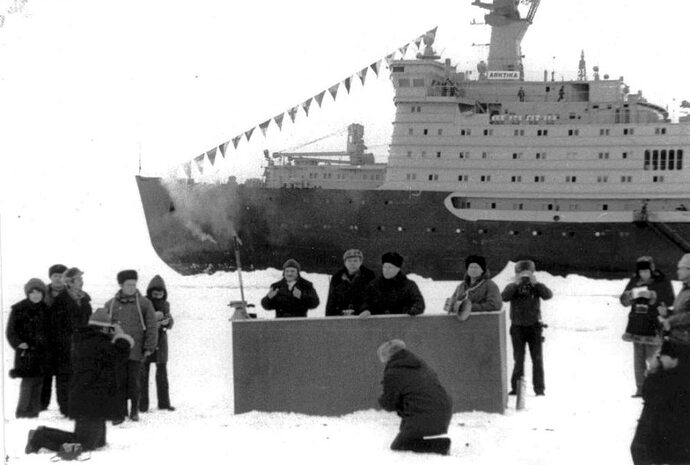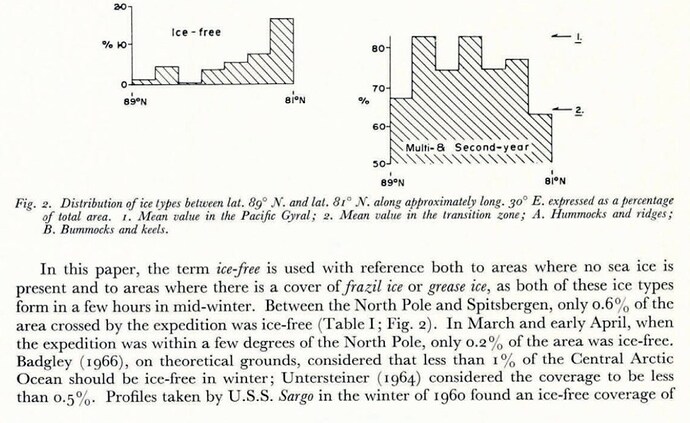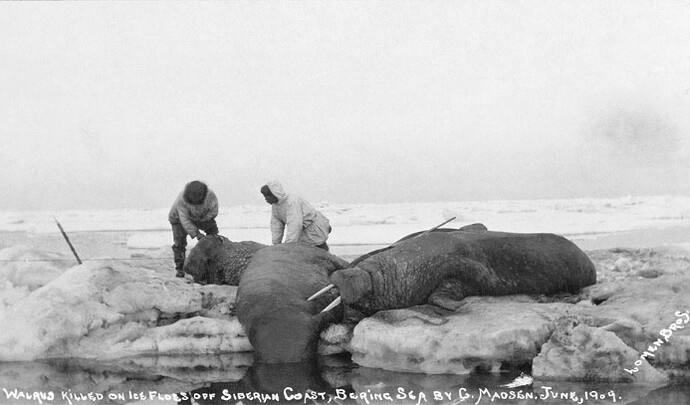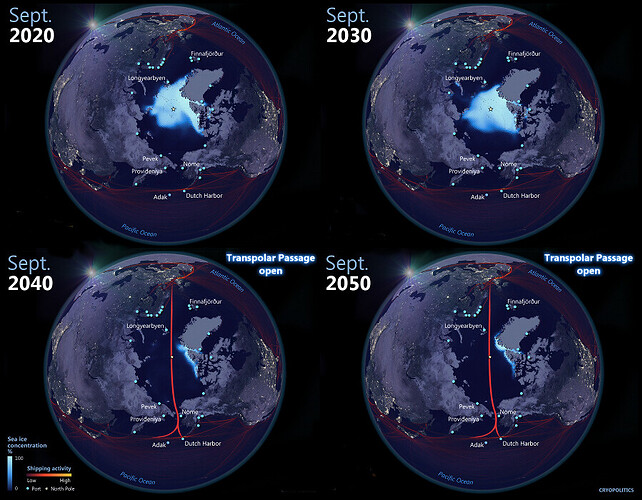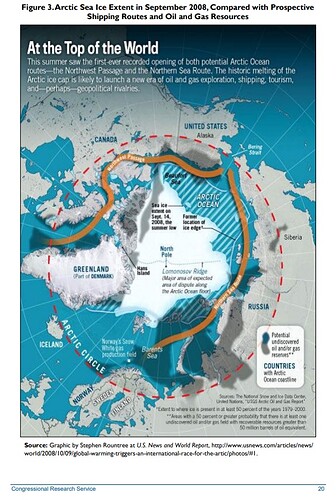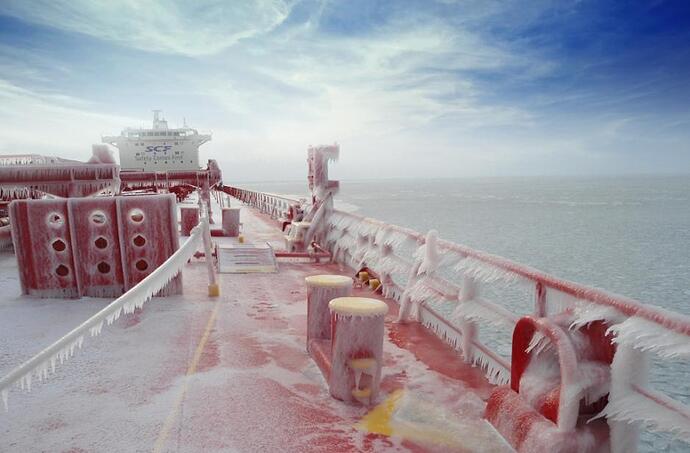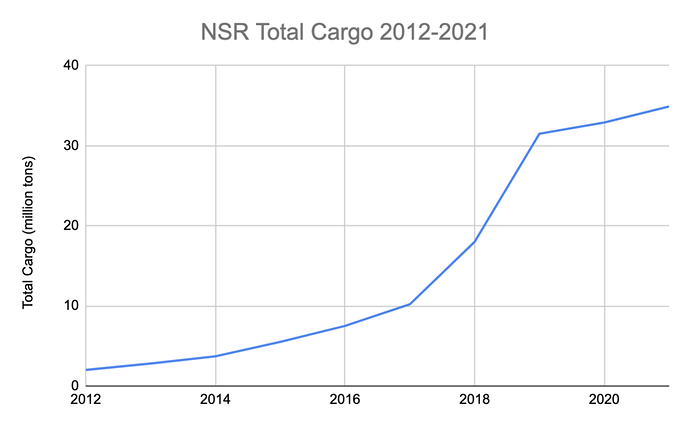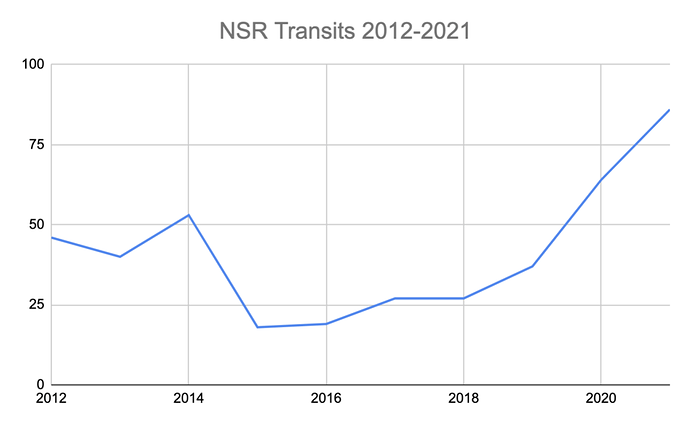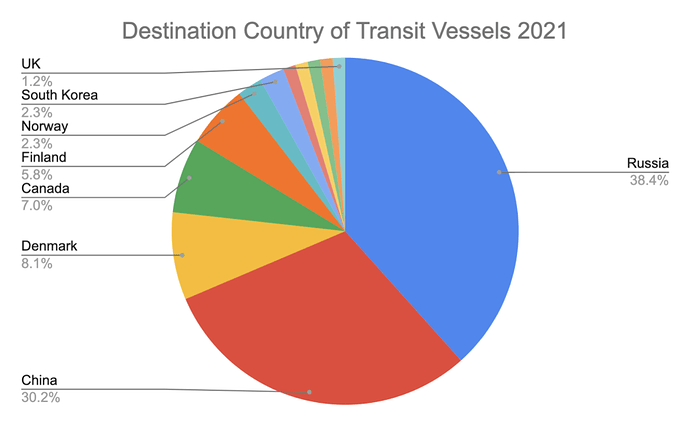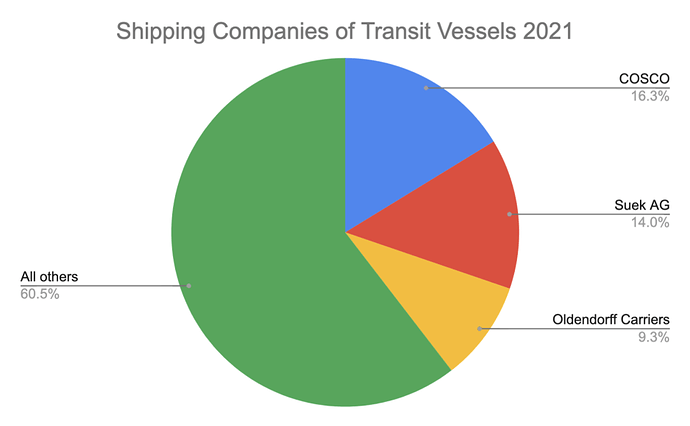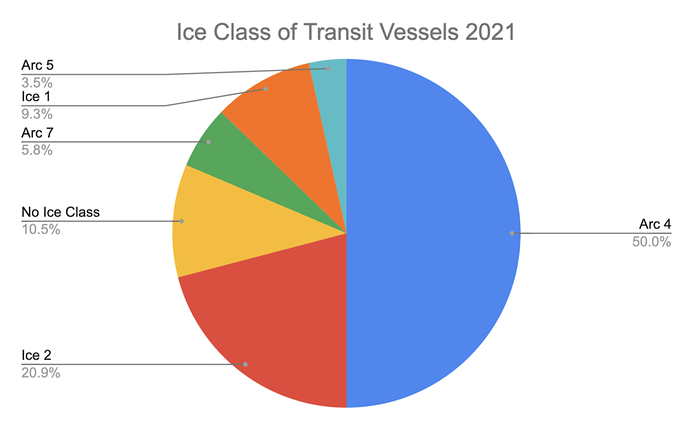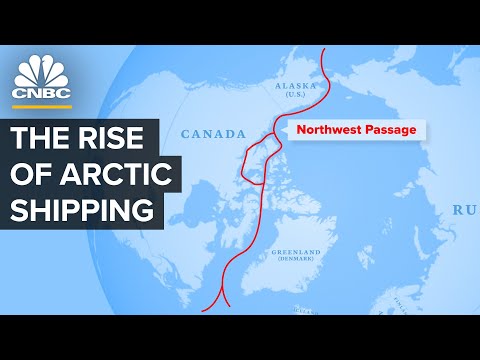List members , Transpolar shipping is at the heart of 21st Century Geopolitics for the major world powers . It will be interesting to see how the Hollow Earth civilisation reacts to these developments on the Earth's surface :-
The Arctic Shipping Route No One’s Talking About
By mid-century, a Transpolar Passage will open across the Arctic Ocean via the North Pole. Few countries are preparing for this reality except China.
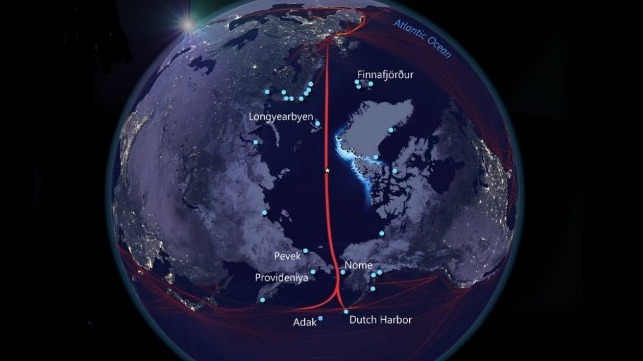
PUBLISHED MAY 8, 2019 3:39 PM BY MIA BENNETT
I recently attended (via teleconference, to cut down on travel time and emissions!) a meeting on future maritime trade flows at the Organisation for Economic Cooperation and Development (OECD)’s International Transport Forum. One session focused exclusively on the Northern Sea Route, the shipping route along Russia’s north coast that has sat at the center of discussions on Arctic development for the better part of two decades now.
Due to Chatham House rules, I can’t quote anyone who spoke in the workshop. I can say, however, that during the session, it quickly became clear that talk of the Northern Sea Route’s potential was starting to seem passé in the face of rapid climate change in the Arctic. The shrinking and thinning of sea ice is happening faster than scientists thought possible – so fast that now, it’s not just the Northern Sea Route or even the Northwest Passage that people are talking about. They’re talking about a trans-Arctic passage cutting straight across the North Pole.
As climate change accelerates and the Arctic Ocean reluctantly exchanges its year-round ice cap for merely seasonal cover, a transpolar passage is likely to open up by mid-century, if not sooner. If Arctic sea ice disappears even for just one summer, as the comprehensive 2009 Arctic Marine Shipping Assessment notes (p. 34), this would spell “the disappearance of multi-year sea ice in the central Arctic Ocean. Such an occurrence would have significant implications for design, construction and operational standards of all future Arctic marine activities.” In the absence of thick multi-year ice, which can be up to five meters deep, any water that refreezes would take the form of much thinner, more navigable seasonable ice.
In other words, forget needing nuclear icebreakers. Within the next few decades, in summer, it may be possible (even if insurance companies and the Polar Code still mandate polar-class, ice-resistant ships) to sail in a regular vessel across the top of the Earth.
Icebreakers: a short-lived technology?
The crew of Arktika at the North Pole on 17 August 1977, sixty years after the Bolshevik Revolution. The Soviet icebreaker was the first surface vessel to ever reach the North Pole. Source: Go Arctic
It was not until 1977 that the first surface vessel reached the North Pole. That ship was Arktika, a Soviet nuclear icebreaker which chugged to 90 degrees north from the industrial city of Murmansk. At that time, the Central Arctic Ocean was still in a deep freeze. Scientific papers such as the 1973 Journal of Glaciology article from which the figure below is taken describe how near the North Pole, “only 0.2% of the area was ice-free.” Such writing now reads like pre- rather than post-apocalyptic science fiction, chronicling once-upon-a-time worlds rather than worlds that might one day be.
An excerpt from “The mass balance of the sea ice of the Arctic Ocean,” an article published in Journal of Glaciology in 1973.
It is both remarkable and terrifying to think that just ten or twenty years from now – and just some six or seven decades after Arktika’s historic voyage – ice-strengthened and perhaps even conventional ships may be able to reach the top of the planet. It is also astonishing that as recently as 2007, people were still talking about the “viability of transarctic nuclear shipping,” as the department head of the U.S. Merchant Marine Academy suggested at a conference in Akureyri that year [2]. He was contemplating using nuclear ships to mitigate emissions depositing soot onto the ice cap that, by darkening it, would accelerate warming. But for better or worse, once the Arctic’s sea ice is gone, the additional climactic consequences of turning what was once white black will be a moot point.
Arktika’s trip to the North Pole was deliberately timed to coincide with the sixtieth anniversary of the Bolshevik Revolution. Ominously, it may also coincide with sixty years before the time when ships could sail directly across an ice-free North Pole. By one estimate, when the Arctic becomes ice-free – and this is almost surely to happen within the next few decades, if only in summer – this will mark the first time in 2.6 million years that the Arctic Ocean has lacked any sea cover.
At the stage when all the ice disappears, icebreaking will become a technology that, invented in its modern variant in 1897, was only really necessary for 150 to 200 years. Like the zeppelin and the Concorde before it, icebreakers will become a futuristic technology lost to history. Their early demise won’t be due to technological or financial failures, however, but rather because humankind made the surfaces it traversed obsolete
The case for shipping via the North Pole
In a world where timeliness means the difference between loss and profit, the Transpolar Passage could prove enticing, just as the Northern Sea Route and Northwest Passage do. For journeys between Europe and Asia, the Northern Sea Route can already be two to three weeks faster than the Suez Canal. By cutting straight across the Arctic, the Transpolar Passage could save a further two days [1]. It might even make sailing through Arctic straits (the Northern Sea Route and Northwest Passage) “obsolete,” as one book suggests.
Fast shipping isn’t everything, of course. Besides time, shipowners also consider risks and costs, and polar shipping still is a more dangerous and pricier undertaking due to the advanced types of ships required, insurance costs, and icebreaker escort fees. Most shipping these days also follows the pendulum model, with vessels stopping at ports between their origin and destination to make deliveries. This logistics chain requires markets, of which there are obviously none in the middle of the Arctic Ocean.
Developing the Transpolar Passage might therefore necessitate some creative rejiggering of the global shipping system. Mikaa Mered, professor of Arctic and Antarctic politics at the ILERI School of International Relations in France, and Adeline Descamps, editor-in-chief of the Journal de la Marine Marchande, have referred to this as a “reversed hub and spoke system.” Ports situated at the Arctic Ocean’s Atlantic and Pacific gateways, like Dutch Harbor, Alaska, which already sees thousands of ships a year pass between North America and Asia, could become hubs for the Transpolar Passage. Cargo could be fast-tracked between Europe and Asia and North America via polar-class shuttles sailing across the Arctic Ocean. These ships also wouldn’t have size restrictions, as the Central Arctic Ocean’s bathymetry isn’t as limiting as the Northern Sea Route or Northwest Passage. Once out of the Arctic Ocean, cargo could be transshipped from places like Dutch Harbor to ports along the North Pacific, or, on the other side, from a place like Iceland to ports along the North Atlantic.
Mered admitted over email, “I know that all of this may sound far-fetched.” But since he first heard the concept discussed at a closed-door Arctic business meeting in northern Norway, he has seen Chinese, South Korean, Icelandic, Alaskan, Russian and Norwegian stakeholders talking about it in greater and greater detail. Alluding to talk of investments in shipbuilding research and design, research taking place already within the Arctic, and infrastructure development, Mered concluded, “I don’t see now why this model wouldn’t emerge by 2050.”
These gateway areas, however – especially around the Bering Sea, where subsistence hunting and fishing is still a vibrant and critical practice – are also where the negative impacts of increased shipping may be felt. Along the Bering Strait, where the Northern Sea Route, Northwest Passage, and Transpolar Passage all meet, people living in communities such as Nome, Teller, or Dutch Harbor, Alaska could all potentially see more ships passing by, and maybe docking, by mid-century. For them, though, this activity may not herald the start of a great new gilded age of connectivity and globalization. The appearance of open water will drastically undermine food security and permanently alter a way of life that has relied on ice and the beluga whales, walruses, and seals that flock to it for generations. To counteract these losses, in a 2014 workshop called “Bering Strait Voices on Arctic Shipping,” one participant suggested that the ships that are already docking could pay into a fund that contributes to protecting food security. Yet while money might bring more food into Bering Strait communities, it can’t bring back the ice.
While more ships may soon sail through the Bering Strait, the age-old practice of hunting walrus on the ice may come to an end this century.
China prepares for an ice-free Arctic Ocean
While most of the world buries its collective head in the sand when it comes to climate change, there is one country that is preparing – paradoxically, somehow both ominously and optimistically – for a future that is several degrees hotter: China. The world’s largest nation sees a planet that is inevitably getting much, much warmer. Even if the planet were to stop emitting all greenhouse gases today, those that already have been emitted into the atmosphere will still induce warming effects for years to come. Since we don’t appear to be doing much to limit our emissions, we are headed for a warmer world – one where the Arctic ice cap may be gone in summer by 2050, and possibly even sooner.
The only country that seems to be ready for that reality is China. In its Arctic Policy, released in January 2018, China calls the trans-Arctic passage the “Central Passage.” It is not referenced in any dramatic way. In that matter-of-fact, this-is-how-the-world-is tone characteristic of Chinese policy documents, the policy notes, “The Arctic shipping routes comprise the Northeast Passage, Northwest Passage, and the Central Passage.” The strategy also mentions the Polar Silk Road, which is often viewed as synonymous with the Northern Sea Route. But keep in mind that the strategy notes that by cooperating with other stakeholders, China aims to “build a ‘Polar Silk Road’ through developing the Arctic shipping routes” – plural likely intentional.
Mered, the ILERI professor, described:
“When we talk about the ‘Polar Silk Road,’ we’re talking about a two-step idea. At first, shipping through the Northeast Passage, with all the limits we know. And then, when market and ice conditions show the model is viable, shipping through the Central Arctic Passage with the shuttle system.”
Meanwhile, other countries’ policies fail to mention any variants of the “Central Passage.” Norway’s Arctic Strategy, updated in 2017, doesn’t include the trans-Arctic passage in the full-length Norwegian version or in the shorter English summary. The former merely indicates (in Norwegian), “As ice conditions change, both the Northeast Passage and the Northwest Passage will be relevant for transport between markets in the Atlantic and the Pacific.”
Canada’s Arctic Foreign Policy only references the Northwest Passage. South Korea – an Asian trading nation with Arctic shipping interests – also describes only the Northern Sea Route in its Arctic Policy.
Iceland’s Arctic Policy, dating back to 2011, also fails to mention the Transpolar Passage. The country, however, which might have served as a sort of shipping hub for Viking voyages around the North Atlantic a thousand years ago [3], may be one place where the route has some resonance. In April, a contract was signed Icelandic stakeholders and German port operator Bremenports to begin construction on a deepwater transshipment port Finnafjörður, a harbor in northeast Iceland, that would service vessels “crossing the North Pole capturing the Asia-Europe route,” as this promotional material (PDF) states. The German company is not Iceland’s only investor, for farsighted China also appreciates the North Atlantic island’s geostrategic potential, as Malte Humpert and Andreas Raspotnik noted in their 2012 article on the Transpolar Sea Route. China and Iceland signed a free trade agreement in 2013, and last year, the China-Iceland Arctic Science Observatory opened outside Akureyri.
Finally, in the so-called “reluctant Arctic state” where less than a fifth of people surveyed know that the country has people and territory in the Arctic, the U.S., a new Arctic defense strategy is still in the works. In the meantime, a March 2019 Congressional Research Service report entitled “Changes in the Arctic: Background and Issues for Congress,” may give some insight into how the region’s shipping potential is perceived in Washington, D.C. The document acknowledges only two routes in its section on commercial sea transportation: the Northern Sea Route and the Northwest Passage. It opens with the typical statement about how Western explorers have sought a shortcut from the Atlantic to Asia for five centuries. Little do they seem to realize, however, that Eastern explorers are now seeking that same shortcut, but right across the North Pole rather than around any continent.
Underscoring the outdated thinking, the report recognizes that since some experts predict that the Arctic will be ice-free in late summer by the 2030s, “this opens opportunities for transport through the Northwest Passage and the Northern Sea Route.” Rather inexplicably, the map included is from 2008 – a year when there were 2.34 million more square kilometers of sea ice in October than there were in 2018 [4]. Not only is the figure over a decade old: it represents a time when there were only two conceivable Arctic Ocean routes rather than three.
The nearly 11-year old figure of Arctic shipping inexplicably included in the March 2019 Congressional Research Service report entitled “Changes in the Arctic: Background and Issues for Congress.”
How exactly would that figure look if it were updated? With Community Earth System Models (CESM) data kindly processed and provided by Scott Stephenson, a geographer at the University of Connecticut and Arctic shipping expert, I was able to mock up a few visualizations of how this would look. Scott has done fantastic work showing that new trans-Arctic shipping routes would be navigable by the middle of this century.
Sea ice concentration in these figures is based on the Representative Concentration Pathway (RCP) 8.5, as that is the situation for which we are most likely headed based on current emission levels. This would result in a world that is close to an average 4.9 degrees Celsius hotter by the century’s end – not the 2 degrees that the Paris Agreement is aiming for. For the purposes of the visualization, I noted that the Transpolar Passage was “open” when there was a clear route across the North Pole – yet sailing even outside these years may be possible, to, provided the ice is thin enough.
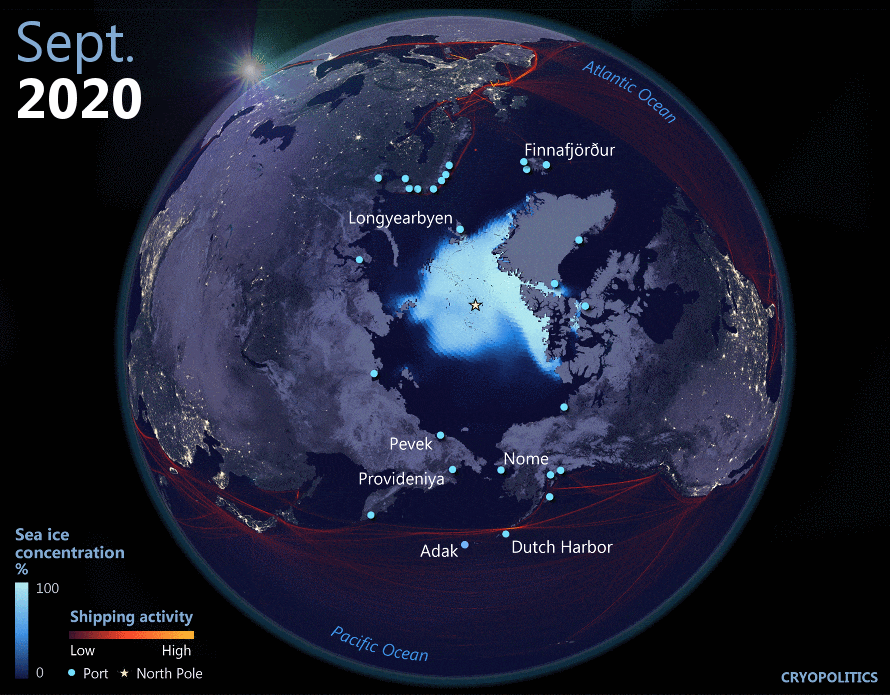
The inevitability of a Transpolar Passage
One might argue that China’s efforts to drum up the Transpolar Passage is a form of geopolitical posturing. Unlike the Northeast and Northwest Passages, the Transpolar Passage would run mostly through the high seas, where all countries have freedom of navigation, rather than through any waters that could be claimed as internal. China would not be beholden to any government’s regulations when sailing there.
More than just an act of geopolitical bravado, however, China may also be trying to establish first-mover advantage in the Transpolar Passage because the climate science makes clear that a seasonally ice-free Arctic is nearly inevitable.
If there is to be a whole new blue ocean within our lifetimes, the real mystery is why other countries aren’t also preparing for an Arctic waterworld. Doing so would mean that rather than only focusing on building icebreakers for the near-term (which China is also doing), serious thought is also given to issues like safety at sea when ships are sailing past the remote North Pole and how to maintain the food security of communities in places like the Bering Strait.
While some might be excited about the possibility of sailing across a new watery passage, merchant marines of the late 21st and 22nd centuries will not be able to write, as James Cook poetically did in 1778, of being “close to the edge of the ice, which was as compact as a wall, and seemed to be ten or twelve feet high at least.” They may describe blue waves and white caps, but ice will be a distant memory, save for perhaps a few holdouts on Greenland’s rugged north shore. Sailing in an ice-free summer also won’t even deliver the joys of watching the aurora due to the 24-hour daylight. Sailor logbooks that recount the color of the aurora over the open ocean at the North Pole will have to wait until voyages during ice-free winters are possible. But those, too, will one day arrive.
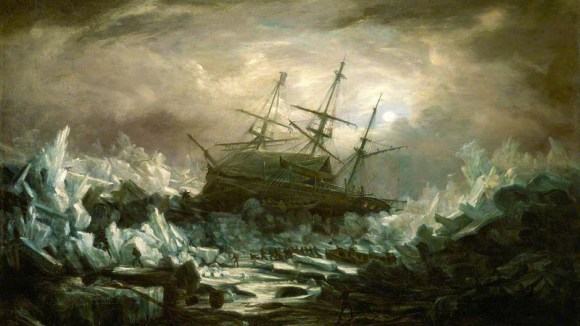
A vanishing sight: Perilous Position of HMS ‘Terror’, Captain Back, in the Arctic Regions in the Summer of 1837, by William Smyth R.N. HMS Terror and her sister ship, HMS Erebus, later infamously became entrapped in ice in the Northwest Passage with their entire crews perishing.
Regards


